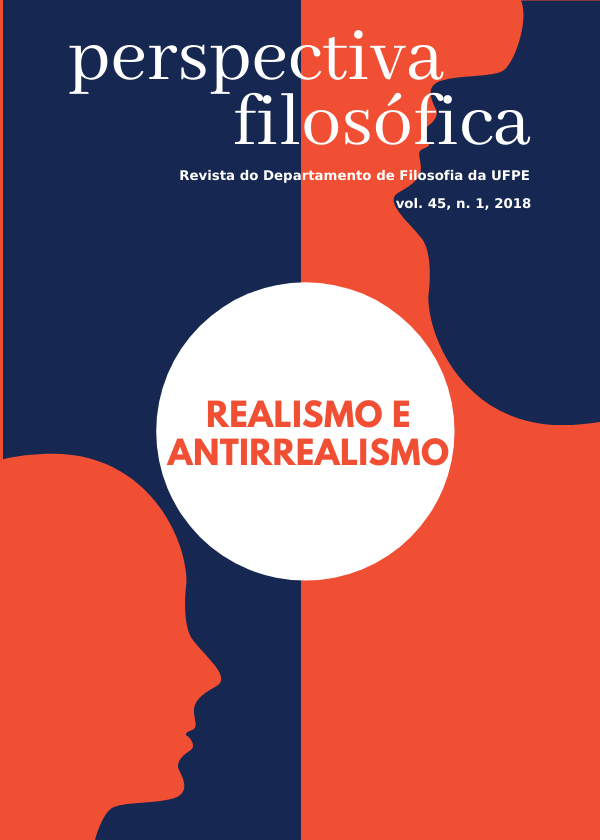How to save van Fraassen’s own antirealism: a modest proposal
DOI:
https://doi.org/10.51359/2357-9986.2018.241532Keywords:
antirealism, constructive empiricism, observability, realism, van FraassenAbstract
Bas van Fraassen’s antirealist view of science and its aim, constructive empiricism, notoriously rests upon a distinction between observable and unobservable entities. In order to back his empiricist stance, the Dutch philosopher put forward his own characterization of observability. Nonetheless, he acknowledges that the point of constructive empiricism is not lost if the line is drawn in a somewhat different way from how he draws it. This means that other characterizations of observability can support this antirealist stance, provided they allow for a viable distinction between the observable and the unobservable. The aim of this work, however, is not to propose another characterization of observability that fits constructive empiricism, but to put forward a little amendment to van Fraassen’s own antirealism, to the effect that it can actually be seen as a coherent position, albeit controversial, since its present consistency might be called into question.References
ALSPECTOR-KELLY, M. (2004) Seeing the unobservable: van Fraassen andthe limits of experience. Synthese, s.l., v. 140, n. 3, p. 331-353, 2004.
BORENSTEIN, S. (2019). Seeing is believing: Four lessons of the new blackhole image. https://phys.org/news/2019-04-believing-lessons-black-hole-image.html. Último acesso em: 05 jun. 2019.
BUEKENS, Filip (1999). Observing in a space of reasons. Unpublishedmanuscript.
BUEKENS, F.; MULLER, F. A. (2012) Intentionality Versus Constructive Empiricism. Erkenntnis, v. 76,p. 91-100.
BUENO, O. (2011a) A evidência visual na ciência. Scientiæ Studia, São Paulo, v.9, n. 2, p. 267-90.
BUENO, O. (2011b) Partial truth and visual evidence. Principia, v.15, n. 2, p. 249–270.
BYERLY, H. (1968) Discussion: Professor Nagel on the Cognitive Status ofScientific Terms. Philosophy of Science, v. 35, n. 4, p. 412-423.
CARNAP, R. (1950) Empiricism, Semantics and Ontology. Revue Internationalede Philosophie, v. 4, p. 20-40.
CHAKRAVARTTY, A. (2007) A Metaphysics for Scientific Realism. Knowing theUnobservable. New York: Cambridge University Press.
CHANG, H. (2004) Inventing Temperature: Measurement and Scientific Progress. NewYork: Oxford University Press.
CHURCHLAND, P. (1982) The Anti-Realist Epistemology of van Fraassen’sThe Scientific Image. Pacific Philosophical Quarterly, v. 63.
CONTESSA, G. (2006) Constructive Empiricism, observability, and threekinds of ontological commitment. Studies in History and Philosophy of Science, v. 37,n. 3, p. 454-468.
FRAASSEN, Bas C. van. (1980) The Scientific Image. Oxford: Clarendon Press.
FRAASSEN, Bas C. van. (2004). Preface to the Greek edition.http://www.princeton.edu/~fraassen/Sci-Img/ Sci_ImagePrefaceGreek.pdf.Último acesso em: 11 jun. 2007.
FRAASSEN, Bas C. van. (1992) From vicious circle to infinite regress, and back again. Philosophyof Science Association Proceedings, v. 2, p. 6-29.
FRAASSEN, Bas C. van. Constructive Empiricism now. (2001) Philosophical Studies, n. 106, v. 1-2,p. 151-170.
FRAASSEN, Bas C. van. The Empirical Stance. (2002) New Haven: Yale University Press.
FRAASSEN, Bas C. van. (2005) The day of the dolphins. Puzzling over epistemic partnership.In: IRVINE, A.; PEACOCK, K. (eds.), Mistakes of Reason: Essays in Honour ofJohn Woods. Toronto: University of Toronto Press, p. 111-133.
FRAASSEN, Bas C. van. (2008)Scientific Representation: Paradoxes of Perspective. Oxford: ClarendonPress.GHINS, M. (2005) Can common sense realism be extended to theoreticalphysics? Logic journal of the IGPL, v. 13, n. 1, p. 95-111.
HACKING, I. (1983) Representing and intervening.Cambridge: CambridgeUniversity Press.
HANSON, P.; LEVY, E. (1982) Reviewed Work: The Scientific Image by Bas C.Van Fraassen. Philosophy of Science, v. 49, n. 2, p. 290-293.
HUMPHREYS, P. (2004) Extending Ourselves. Computational Science, Empiricism,and Scientific Method. New York: Oxford University Press.
KOSSO, P. (2006) Detecting extrasolar planets. Studies in History and Philosophyof Science, v. 37, n. 2, p. 224-236.
KUSCH, M. (2015). “Microscopes and the Theory-Ladenness of Experience inBas van Fraassen’s Recent Work”, Journal for General Philosophy of Science, v. 46, n.1, p. 167-182.
LUTZ, O. (2019) How Scientists Captured the First Image of a Black Hole.https://www.jpl.nasa.gov/edu/news/2019/4/19/how-scientists-captured-the-first-image-of-a-black-hole. Último acesso em: 05 jun. 2019.
MENUGE, A. (1995) The Scope of Observation. The Philosophical Quarterly, v.45, n. 178, p. 60-69.
MITSUO NIXON, D. (2004) What would it mean to directly observeelectrons? Principia, Florianopolis, v. 8, n. 1, p. 1-18.
MOSTERÍN, J. (1998) Technology-mediated observation. Techné: Research inPhilosophy and Technology, v. 4, n. 2, p. 68-80.
NAGEL, J. (2006) Empiricism. In: SARKAR, S.; PFEIFER, J. (eds.), ThePhilosophy of Science: An Encyclopedia. New York: Taylor & Francis Group, p.235-243.
NOË, A. (2003) Causation and Perception: The Puzzle Unravelled. Analysis, v.63, n. 2, p. 93-100.
SEAGER, W. (1995) Ground Truth and Virtual Reality: Hacking vs. VanFraassen. Philosophy of Science, v. 62, n. 3, p. 459-478.
SOBER, E. (2008) Empiricism. In S. Psillos and M. Curd (eds.), The RoutledgeCompanion to the Philosophy of Science. New York: Routledge, p. 129-138.
TELLER, P. (2001). Whither Constructive Empiricism?Philosophical Studies, v.106, n. 1-2, p. 123-150.
Downloads
Published
Issue
Section
License
A Revista Perspectiva Filosófica orienta seus procedimentos de gestão de artigos conforme as diretrizes básicas formuladas pelo Conselho Nacional de Desenvolvimento Científico e Tecnológico (CNPq). http://www.cnpq.br/web/guest/diretrizesAutores que publicam nesta revista concordam com os seguintes termos:
Os autores mantém os direitos autorais e concedem à revista o direito de primeira publicação, sendo o trabalho simultaneamente licenciado sob https://creativecommons.org/licenses/by/4.0/deed.pt_BR que permite o compartilhamento do trabalho com reconhecimento da autoria e publicação inicial nesta revista.
Os autores têm autorização para assumir contratos adicionais separadamente, para distribuição não-exclusiva da versão do trabalho publicada nesta revista, com reconhecimento de autoria e publicação inicial nesta revista (Consultar http://opcit.eprints.org/oacitation-biblio.html).

Esta revista está licenciada com uma Licença Creative Commons Atribuição 4.0 Internacional.













